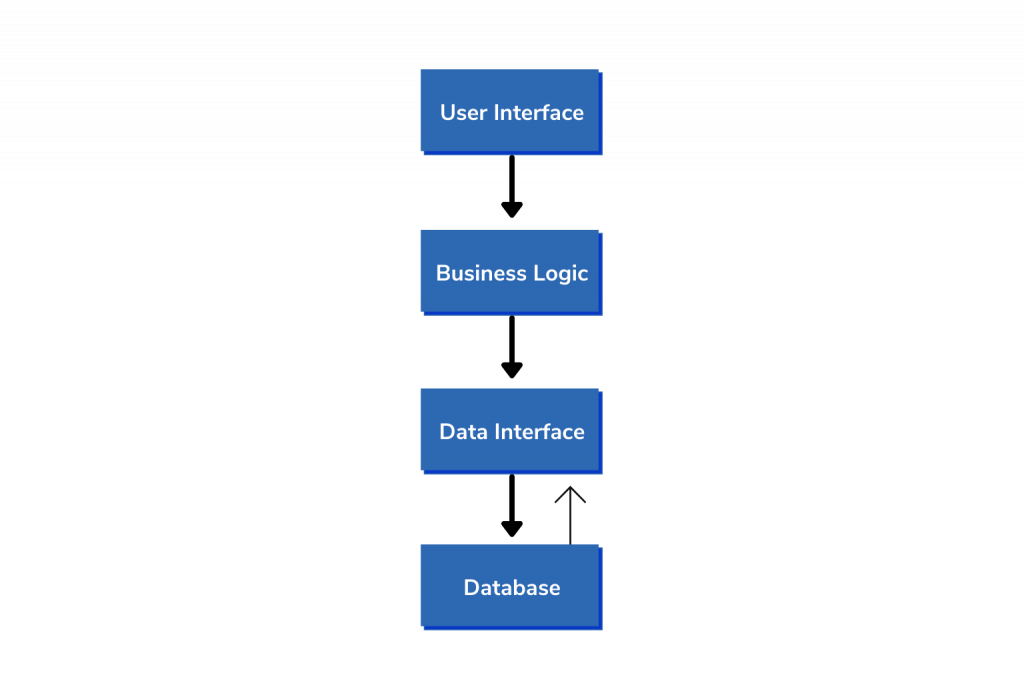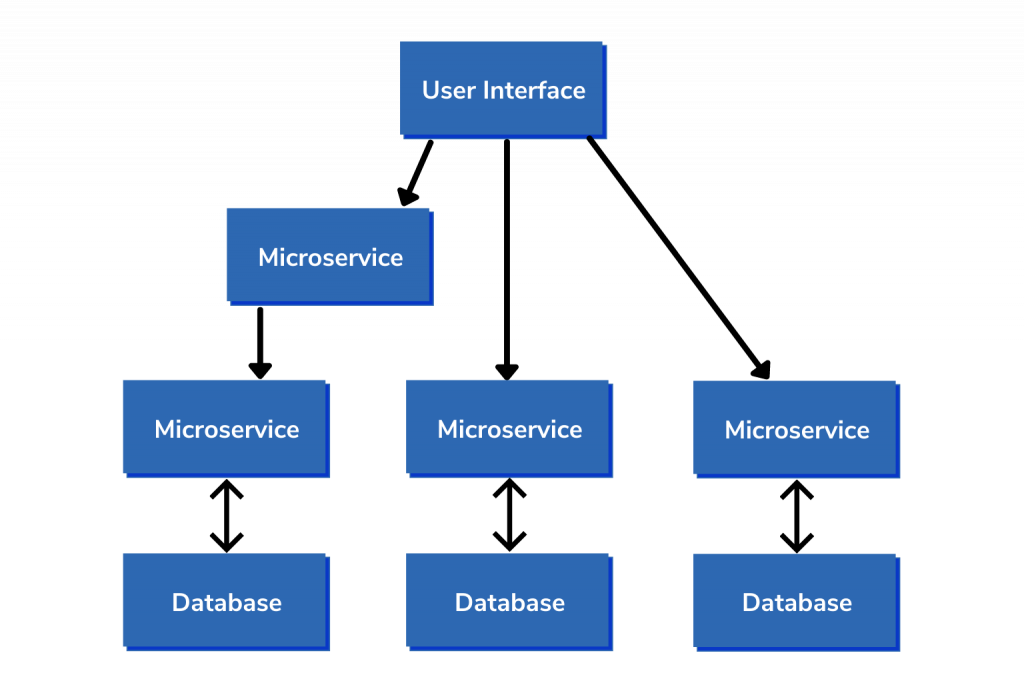The post Low-Code or No-Code Technologies — Will they kill Developer Jobs? appeared first on Annexbyte.
]]>They allow developers and regular users to select their own digital components for an application, connect them, and create customized apps.
In most cases, they provide easy-to-use, drag-and-drop features to allow users to graphically configure their apps.
Because they do not require any technical expertise and coding know-how, they are referred to as low-code or no-code technologies and platforms.
Growing Demand of Low-Code No-Code Platforms
The low-code no-code platforms were initially developed to overcome the growing needs of automation in business processes.
Providing fast and effective solutions for creating tailor-made digital applications in large volumes helped enhance a company’s productivity.
Additionally, they were the best-suited system to keep up with the corporate world’s dynamic and fast-changing technological environment.
The low-code no-code platforms are currently catering to almost half of the new IT applications around the world. The numbers are expected to increase tremendously in the years to come.
The emergence of the COVID pandemic and its aftermath significantly impacted the technology’s growth and infiltration in the market.
With a drastic shift in the way businesses interact with their customers now, the COVID pandemic has seemed to have sparked a much higher demand for these kinds of systems.
With this technology, people and business entities can make quick, easy, and convenient changes to their existing applications and interfaces.
Therefore, more and more companies are opting for this revolutionary innovation because of its high speed and agility.
Will Low-Code No-Code Kill Developer Jobs?
With all the advantages and superior functions that a low-code no-code platform brings with it, it will continue to disrupt the traditional software development process.
The emerging question in this scenario is whether this shifting trend will result in lesser jobs for professional code developers.
The answer is certainly not.
In fact, in many cases, the growth of this innovatively dynamic platform is encouraging more people to become developers. Here are some reasons to support our claim.
1. Technology Always Benefits the Society
The fear of the unknown or adopting something new has always been a common phenomenon in all of us. Like artificial intelligence, people are now a little skeptical about the outcomes of this technology on society and our workforce.
Historically it can be proven that new technologies have always helped humankind grow as a community. People from all walks of life leverage different forms of technology to improve their performance, enhance productivity and increase returns.
The same is the case with low-code no-code technology.
It not only creates simplicity for businesses but also for developers. It promotes teamwork and lets you gain synergies from your combined efforts.
2. Teamwork and Developer Expertise are Still in Demand
Instead of posing a threat or problem to the traditional developers, the low-code no-code systems allow developers to create platforms and applications faster and more efficiently.
If, for instance, a company wants to build an application for their business process, they will opt for a low-code or no-code platform. However, they will hire a specialist developer to work on that platform.
Whether this developer is in-house or external, it will be his responsibility to create a seamless and user-friendly app for their customer.
It helps promote teamwork and brings out faster mechanisms of feedback.
3. Developers are needed to Educate Workforce
Being a relatively new and changing technology, not all employees or company staff knows how to use or work on a low-code no-code platform.
Suppose a company does opt to follow this unconventional system for their business. In that case, it will be the responsibility of the actual expert developers to educate and empower their employees about its usage.
They will be the ones who will educate this community to go faster, further, and innovate on their own.
4. Helps Reduce Burden for the Developers
The low-code no-code platform allows existing developers to overcome the burden of dealing with the remedial part of the application development.
Even when considering other types of digital projects, small, tedious, and repetitive tasks often hamper the ability of the developers to perform at their best.
Traditional development requires them to respond to every end-user request and fulfill any changes in the application requested by the product managers.
The low-code no-code technology helps take the burden off from the developer and allows the end-users to make the necessary changes and upgrades themselves.
5. Developers Can Focus on Real Tasks
With a lesser burden and no repetitive or trivial tasks to undertake, the developers can focus more on their actual work, developing new applications and products.
The low-code technology allows the developers to direct all their attention and innovative efforts towards their critical goals and objectives.
There are no unnecessary disruptions of remedial tasks to distract them from their core objectives.
Hence the low-code no-code phenomenon helps them speed up their development process and enables them to innovate better
6. Allows Automation of Development Processes
The low-code and no-code technology are as helpful and effective for the developers as they are for the end-users or business community.
Everyone wants to enhance their productivity and efficiency. Being a tool for automation of the processes, the technology helps automate the developer’s processes as well.
Using this innovative system, developers will be more empowered to perform and create products faster and with convenience.
Final Thoughts
Low-code or no-code is a technology that is often considered a threat for developers.
But with all the advantages, flexibility, and speed it offers, it is a growing opportunity for the entire development community.
The post Low-Code or No-Code Technologies — Will they kill Developer Jobs? appeared first on Annexbyte.
]]>The post Why are Industries turning to Microservices? appeared first on Annexbyte.
]]>Microservices – the world became familiar when this term was coined in 2011. Because of the results it yields, a large percentage of the tech giants and other companies are already making use of it. If we look at a survey conducted by Nginx, almost 36% of the organizations they included in the survey were already using it. Not only this, 26% were thinking of migrating to it.
But what is all the hype about? Why are microservices taking over the traditional architecture of app/software development? In this article, we will discuss what microservices are and why the companies are turning to them? Before we discuss what microservices are, let’s look at monoliths, the architectural framework used before them
What are Monoliths?
It was a multi-tier, centralized architecture of app/software development. The entire coding was done from one place, and the code was centralized. Before the advent of the cloud and mobiles, this was the best way to code. The development was done through one desktop. It was one unified unit.

If any change was to be made, you had to update the entire app. This exposed the code to bugs and malware. The biggest disadvantage was that there was no functional scalability. It was not possible to scale only one function. Yes, you couldn’t add or delete a function. You had to go ahead and scale the entire app. This would result in extremely high costs. The microservices came into being to curtail all these problems.
What are Microservices?
Microservices break down the code into different, independent services. Each service is run as an entirely different process than the others. There is no interdependency. In this way, you can work on different parts of the code at the same time.
The result of one service is the input of the other service. This makes the development process more manageable, smoother, efficient, and does not burden one person. This is excellent for businesses today. To be honest, change and innovation are the need of the day. Companies can’t say that the app they have made is perfect and will not need any change.
Each service in this architecture has its own business logic and database independent of the other services. It is platform and device-agnostic. This is why it helps businesses provide their customers with the best user experience on different platforms. PayPal, Twitter, Netflix, eBay, and Amazon are just some of the names already using microservices.

Reasons Why Industries Are Turning to Microservices
1. Scalability
One of the most apparent benefits is the scalability option. This is because each service is a separate entity. Tools like Kubernetes allow you to scale functions independently. This increases the efficiency of your app. It will save time and a lot of money. When one service is being changed, there will be no impact on the other one.
2. Flexibility and Adaptability
You are not bound by anything. The beauty of microservices is that different technologies can be used to develop different services. Teams can decide which framework and programming language they prefer. Different parts of the application code can have different languages.
An excellent example can be The Guardian. When an event ends, they can easily remove it without changing anything on the website.
3. Quicker Market Availability
The concept being microservices is loosely coupled services. This allows you to make changes to specific parts if needed. There is no need to write the entire code again just to modify a single feature. Another important thing is that testing, debugging, and improving smaller units is easier than the entire code. It takes less time and effort.
This allows the app to be developed faster. All the microservices are independently deployable and testable. This cuts down the time to make it available to the users.
4. Continuous and Consistent Delivery
A continuous delivery model is used in microservices. There are dedicated, specialized, and small teams working on different services to keep the life cycle of app development working. It is a continuous process.
Everyone is working simultaneously. Developers, testers, and operations team working side by side allows for faster and better debugging. This allows for the development to keep going on regardless of any error. Another advantage is the code presence in the library. You don’t need to develop new codes from scratch. You can always use a code from the library instead of inventing a new one.
5. Better Team Collaboration
With it, team efficiency is optimized. You can hire special team members keeping in mind their capabilities and expertise, to work on one service. They can do what they do best. “Too many chefs ruin the broth,” this is true in this case. When a large number of people are working on one code, it can get complicated.
This was one of the major reasons Netflix decided to shift to microservice architecture. They hired 25 engineers to work on one project. The sheer number of engineers resulted in many difficulties. The people were finding it difficult to work with each other. By making use of microservices, the team was divided into smaller units.
Wrapping Up
Undoubtedly, microservices are the future. It is cost-effective, efficient, and practical. But this does not mean it does not have its limitations. Businesses can’t shift to this architecture overnight. You need to have the proper tools and services in place.
Robust monitoring is essential. Continuous development required continuous monitoring. You need to have proper measures in place to avoid any issues. Lastly, keep in mind that you can go overboard. Don’t unnecessarily break down services just for the sake of it. It can cost you more. In a nutshell, if done properly, microservices are highly beneficial.
References
https://www.plutora.com/blog/understanding-microservices
https://wiredelta.com/10-reasons-why-microservices-are-the-future/
https://www.cio.com/article/3201193/7-reasons-to-switch-to-microservices-and-5-reasons-you-might-not-succeed.html
The post Why are Industries turning to Microservices? appeared first on Annexbyte.
]]>